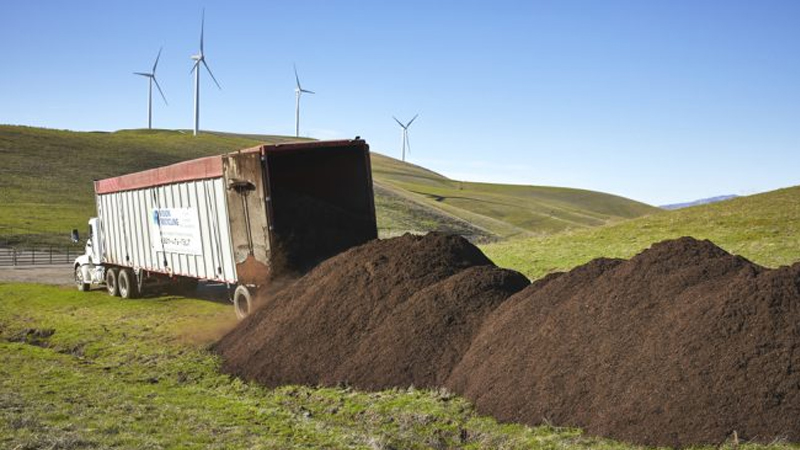The land is part of a 1,600-acre property owned by StopWaste (the Alameda County Waste Management Authority) in the East Bay. The research project is a collaboration between the Alameda County Resource Conservation District (RCD), the University of California (UC) Merced, and StopWaste to engage agricultural producers in “carbon farming,” practices that help capture greenhouses gases such as carbon dioxide, bolster groundwater recharge, reduce erosion, and increase plant productivity. The researchers chose the sloping land to measure results and compare them to tests already conducted on flatter areas.
“Most grasslands in California occur in places with highly varied terrain,” explains Rebecca Ryals with UC Merced. “If the results of our study are positive, planners and landowners should feel more confident about applying compost to a wider array of locations, including hillsides, which would greatly expand the applicability of the practice throughout the state.” Ryals’ Agroecology Lab studies ecosystem-based climate solutions and researches the effects of organic matter amendments to agricultural soils. Over the next three years, the research team will measure changes in the amount of carbon stored in the soil and greenhouse gases that are emitted from the soil, as well as measure the co-benefits provided by higher levels of soil carbon, including better water infiltration and forage production.
“The goal of our project is to demonstrate to ranchers that they can adopt new practices or adapt existing practices to sequester carbon,” notes Alameda County RCD biologist Hillary Sardiñas. The RCD recently developed a Carbon Farm Plan for StopWaste’s property that outlines practices — from compost application to riparian restoration — to sequester carbon while supporting the grazing operation and enhancing wildlife habitat. Spreading compost is viewed as the first phase in several designed to capture carbon. “This is just the first step,” adds Kelly Schoonmaker of StopWaste. “Carbon farming shows a lot of promise in helping to reverse climate change impacts while returning organic matter back to the soil.” The project is funded by a California Department of Food and Agriculture Healthy Soils Demonstration grant.













